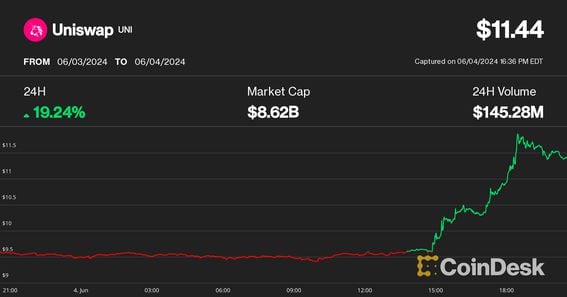Chainlink extended its streak of cooperation with traditional finance, this time aiming to integrate the Swift interbank payment system with tokenized assets.
Chainlink (LINK), the leading crypto oracle, completed another pilot in cooperation with UBS and Swift. Chainlink proposed solutions to connect the interbank payment system with various tools for on-chain settlement.
The Chainlink pilot was part of Project Guardian, launched by the Monetary Authority of Singapore (MAS). One of the main tests during the pilot program was to use the Swift payment system to settle on-chain transfers. Swift not only works as a payment data system and a compliance network, but also arranges communication and meetups in the banking community. The organization may be key to spreading Chainlink’s approach to traditional finance.
Chainlink has shifted its focus to banking institutions, which build private chains. Their forms of settlement and liquidity do not depend on the usual crypto practices. The role of Chainlink is to offer reliable and timely data from both on-chain and off-chain events.
“For digital assets to be adopted globally, they must seamlessly integrate with both existing payment systems and digital currencies,” said Jonathan Ehrenfeld, Head of Strategy, Swift. “Our work with UBS Asset Management and Chainlink in MAS’ Project Guardian leverages the global Swift network to bridge digital assets with established systems,” he said.
Chainlink, UBS Asset Management, and Swift explored tools for buying and selling tokenized funds using the Swift payment system. The reach of the available settlements would reach 11,500 financial institutions across 200 countries and territories.
The oracle technology of Chainlink would be used to avoid manual settlement or multiple steps when moving from token-based assets to fiat. Chainlink has automated events in crypto space, and hopes to do the same for traditional business processes. Previously, Chainlink explored ways to move smoothly between different private, business-specific chains, again in cooperation with UBS Asset Management.
Chainlink’s move replaces the general narrative that blockchains would displace Swift payments. The movement between on-chain and traditional transfers has happened manually so far, but Chainlink aims to automate the process and remove the possibility for mistakes.
The approach of Chainlink may mean that financial institutions can have a separate market for settling their claims, not going through crypto infrastructure. The approach also goes counter to the value proposition of Ripple, which has claimed its system can replace Swift.
Skeptics have noted that Chainlink will have no immediate use cases for its research, but the project is one of the first to demonstrate on-chain integration and RWA to banks and financial institutions.
Chainlink adds 40 new projects
Despite its involvement with banks, Chainlink has not abandoned crypto space. In the past month, 40 crypto networks and projects integrated Chainlink oracles. TRON DAO was among the new chains to add CCIP as its go-to data solution for events, pricing and other smart contract data.
Chainlink is also supporting DeFi on Bitcoin, quickly increasing the number of integrations. Chainlink already onboarded 10 BTCFi projects, following the trend of unlocking the value of idle BTC.
Most Chainlink use cases are linked to the Ethereum ecosystem, with 1,151 onboarded apps and projects in total.
Chainlink still secures a total of 402 projects, or around 49% of all data-based apps and platforms. Chainlink also secures more than $24B in value, mostly tied to DeFi projects.
The share of Chainlink gradually fell from 62% as new oracles emerged. Despite this, Chainlink is still most often the first choice for reliable data. Other oracles either catch up by adding new projects, or are built to serve only one niche chain or project.
Despite the expansion, LINK tokens remain close to their yearly lows, trading around $10. LINK is at $10.79, retaining trading volumes above $280M in 24 hours. LINK has been aggressively longed in November, changing the previous trend.
Open interest slid in the past week, from over 180M down to $150M as interest in altcoins slowed down. LINK has lost its cult status and trades as a utility token, mostly used for fees on the CCIP chain.
CCIP is mostly used to transfer niche stablecoins between chains. However, cross-chain transfers are still relatively low-volume, carrying under $500K in value in the past few days.





